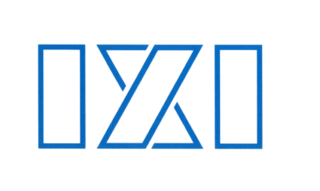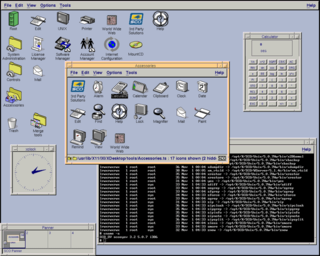
AIX is a series of proprietary Unix operating systems developed and sold by IBM for several of its computer platforms.

Sun Microsystems, Inc. was an American technology company that sold computers, computer components, software, and information technology services and created the Java programming language, the Solaris operating system, ZFS, the Network File System (NFS), and SPARC microprocessors. Sun contributed significantly to the evolution of several key computing technologies, among them Unix, RISC processors, thin client computing, and virtualized computing. Notable Sun acquisitions include Cray Business Systems Division, Storagetek, and Innotek GmbH, creators of VirtualBox. Sun was founded on February 24, 1982. At its height, the Sun headquarters were in Santa Clara, California, on the former west campus of the Agnews Developmental Center.

Novell, Inc. was an American software and services company headquartered in Provo, Utah, that existed from 1980 until 2014. Its most significant product was the multi-platform network operating system known as Novell NetWare.
Sequent Computer Systems was a computer company that designed and manufactured multiprocessing computer systems. They were among the pioneers in high-performance symmetric multiprocessing (SMP) open systems, innovating in both hardware and software.

The Santa Cruz Operation, Inc. was an American software company, based in Santa Cruz, California, that was best known for selling three Unix operating system variants for Intel x86 processors: Xenix, SCO UNIX, and UnixWare.

IXI Limited was a British software company that developed and marketed windowing products for Unix, supporting all the popular Unix platforms of the time. Founded in 1987, it was based in Cambridge. The product it was most known for was X.desktop, a desktop environment graphical user interface built on the X Window System. IXI was acquired by the Santa Cruz Operation (SCO) in February 1993.

UnixWare is a Unix operating system. It was originally released by Univel, a jointly owned venture of AT&T's Unix System Laboratories (USL) and Novell. It was then taken over by Novell. Via Santa Cruz Operation (SCO), it went on to Caldera Systems, Caldera International, and The SCO Group before it was sold to UnXis. UnixWare is typically deployed as a server rather than a desktop. Binary distributions of UnixWare are available for x86 architecture computers. UnixWare is primarily marketed as a server operating system.

Unix System V is one of the first commercial versions of the Unix operating system. It was originally developed by AT&T and first released in 1983. Four major versions of System V were released, numbered 1, 2, 3, and 4. System V Release 4 (SVR4) was commercially the most successful version, being the result of an effort, marketed as Unix System Unification, which solicited the collaboration of the major Unix vendors. It was the source of several common commercial Unix features. System V is sometimes abbreviated to SysV.

Unix System Laboratories (USL), sometimes written UNIX System Laboratories to follow relevant trademark guidelines of the time, was an American software laboratory and product development company that existed from 1989 through 1993. At first wholly, and then majority, owned by AT&T, it was responsible for the development and maintenance of one of the main branches of the Unix operating system, the UNIX System V Release 4 source code product. Through Univel, a partnership with Novell, it was also responsible for the development and production of the UnixWare packaged operating system for Intel architecture. In addition it developed Tuxedo, a transaction processing monitor, and was responsible for certain products related to the C++ programming language. USL was based in Summit, New Jersey, and its CEOs were Larry Dooling followed by Roel Pieper.

Xinuos OpenServer, previously SCO UNIX and SCO Open Desktop, is a closed source computer operating system developed by Santa Cruz Operation (SCO), later acquired by SCO Group, and now owned by Xinuos. Early versions of OpenServer were based on UNIX System V, while the later OpenServer 10 is based on FreeBSD 10. However, OpenServer 10 has not received any updates since 2018 and is no longer marketed on Xinuos's website, while OpenServer 5 Definitive and 6 Definitive are still supported.
Data Access Language for the Macintosh, or simply DAL, was a SQL-like language and application programming interface released by Apple Computer in 1990 to provide unified client/server access to database management systems. It was known for poor performance and high costs, something Apple did little to address over its short lifetime, before it was sold off in 1994. DAL is used as the native SQL dialect of the PrimeBase SQL server, as well as the now-defunct Butler SQL.
Caldera OpenLinux (COL) is a defunct Linux distribution. Caldera originally introduced it in 1997 based on the German LST Power Linux distribution, and then taken over and further developed by Caldera Systems since 1998. A successor to the Caldera Network Desktop put together by Caldera since 1995, OpenLinux was an early "business-oriented distribution" and foreshadowed the direction of developments that came to most other distributions and the Linux community generally.
A web desktop or webtop is a desktop environment embedded in a web browser or similar client application. A webtop integrates web applications, web services, client–server applications, application servers, and applications on the local client into a desktop environment using the desktop metaphor. Web desktops provide an environment similar to that of Windows, Mac, or a graphical user interface on Unix and Linux systems. It is a virtual desktop running in a web browser. In a webtop the applications, data, files, configuration, settings, and access privileges reside remotely over the network. Much of the computing takes place remotely. The browser is primarily used for display and input purposes.
MKS X/Server, a commercial X server developed by MKS Inc., allows users to access Unix/Linux systems from a PC computers which run a Microsoft Windows operating system. The product offers both a full 32-bit X server and a native 64-bit X server that operate on various versions of Microsoft Windows.
Oracle Secure Global Desktop (SGD) software provides secure access to both published applications and published desktops running on Microsoft Windows, Unix, mainframe and IBM i systems via a variety of clients ranging from fat PCs to thin clients such as Sun Rays.
Tarantella was a line of products developed by a branch of the company Santa Cruz Operation (SCO) since 1993. In 2001, SCO was renamed Tarantella, Inc. as it retained only the division that produced Tarantella. On July 13, 2005, Tarantella, Inc. was purchased by Sun Microsystems for US$25M. Tarantella exists now as a division of Oracle Corporation.
Vinzant Software is a privately held company that is based in Hobart, IN. Vinzant Software develops and markets enterprise job scheduling products for platforms including Windows, Unix, Linux, IBM i, and MPE/ix. It was founded in 1988 by David Vinzant and has focused solely on job scheduling since 1995.

X.desktop was an early desktop environment graphical user interface built on the X Window System. It was developed and sold during the late 1980s and early 1990s by IXI Limited, a British software house based in Cambridge. Versions of X.desktop were available for over 30 different UNIX operating system platforms and it was licensed to various vendors, including IBM, Compaq, Locus Computing Corporation, BiiN and Acorn Computers, the latter licensing it in 1988 for its future workstation products.
Systime Computers Ltd was a British computer manufacturer and systems integrator of the 1970s and 1980s. During the late 1970s and early 1980s, Systime become the second largest British manufacturer of computers, specializing in the minicomputer market.
Chorus Systèmes SA was a French software company that existed from 1986 to 1997, that was created to commercialise research work done at the Institut national de recherche en informatique et en automatique (INRIA). Its primary product was the Chorus distributed microkernel operating system, created at a time when microkernel technology was thought to have great promise for the future of operating systems. As such Chorus was in the middle of many strategic partnerships regarding Unix and related systems. The firm was acquired by Sun Microsystems in 1997.











